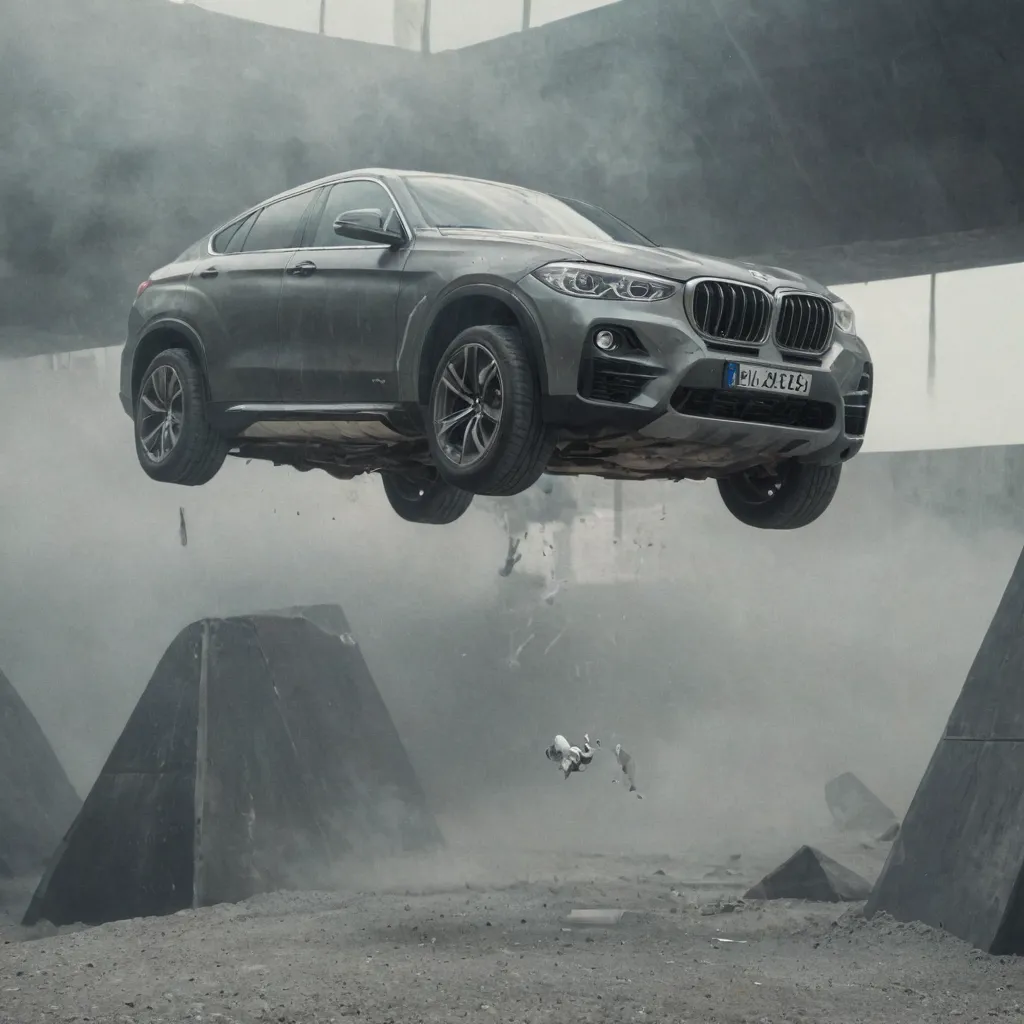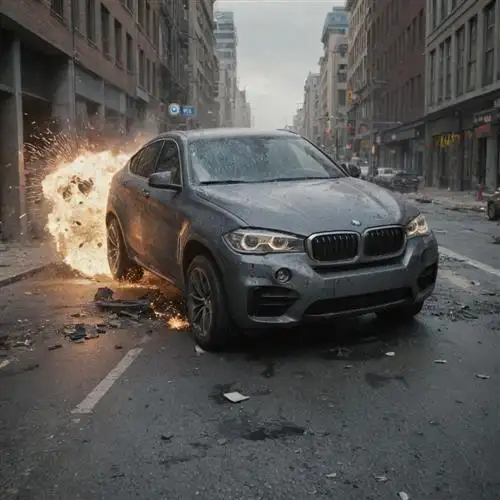
Advanced Safety Features of the BMW X6
The Advanced Safety Features of the BMW X6 are designed to provide the highest level of protection for both the driver and passengers. The vehicle's cutting-edge technology and innovative engineering work together to create a safer driving experience, even in the most challenging conditions.
One of the standout safety features of the BMW X6 is its comprehensive suite of driver assistance systems. These systems utilize a network of sensors and cameras to monitor the vehicle's surroundings and provide real-time information to the driver. The Collision Warning system, for example, uses radar and camera technology to detect potential collisions and warn the driver, allowing them to take evasive action or apply the brakes automatically if necessary.
Another crucial safety feature is the BMW X6's advanced Blind Spot Monitoring system. This system uses radar sensors to detect vehicles in the driver's blind spots and provides visual and audible alerts, helping to prevent potentially dangerous lane changes or merges. The Lane Departure Warning system further enhances safety by alerting the driver if the vehicle starts to drift out of its lane, encouraging them to make corrective adjustments.
The BMW X6's safety features extend beyond just driver assistance. The vehicle's strong, lightweight body structure is designed to absorb and distribute impact forces in the event of a collision, helping to protect the occupants. Additionally, the X6 is equipped with a comprehensive airbag system, including front, side, and curtain airbags, to provide multi-dimensional protection.
The BMW X6's Advanced Safety Features also include advanced braking systems, such as the Anti-lock Braking System (ABS) and Dynamic Stability Control (DSC). These systems work together to maintain vehicle stability and control, even in emergency braking situations or on slippery surfaces.
Moreover, the BMW X6 is equipped with a state-of-the-art Intelligent Emergency Call system. This feature automatically contacts emergency services in the event of a collision, providing critical information such as the vehicle's location and the severity of the incident, ensuring a rapid and effective response.
Conflicting Safety Ratings and Controversies
The BMW X6, a crossover utility vehicle (CUV) that has sparked both praise and controversy, has long been a subject of debate when it comes to its safety ratings and the surrounding controversies. Delving into the conflicting safety assessments and the issues that have plagued this model, it's essential to understand the full picture to make an informed decision.
One of the primary concerns surrounding the BMW X6's safety has been the conflicting ratings it has received from various safety organizations. While the vehicle has earned impressive scores in certain categories, such as front and side-impact crash tests, it has also faced criticism for its performance in other areas. The Insurance Institute for Highway Safety (IIHS), for instance, has awarded the X6 a "Good" rating in most crashworthiness tests, but a "Marginal" rating in the small overlap front test, which simulates a collision with a tree or a telephone pole.
This discrepancy in safety ratings has led to ongoing debates and controversies. Some experts argue that the X6's high center of gravity and SUV-like dimensions make it more susceptible to rollover accidents, a concern that is not fully addressed by the traditional crash test scenarios. Additionally, the vehicle's large size and weight can pose a threat to smaller, lighter vehicles in the event of a collision, potentially leading to more severe consequences for the occupants of the other vehicle.
Furthermore, the BMW X6's safety features have also come under scrutiny. While the vehicle is equipped with a range of advanced safety technologies, such as adaptive cruise control, lane departure warning, and automatic emergency braking, there have been reports of inconsistencies in the performance and reliability of these systems. This has led to concerns about the overall effectiveness of the X6's safety features in real-world driving situations.
Real-World Safety Performance and Incidents
The BMW X6 is a highly popular and controversial luxury crossover SUV, known for its unique design and powerful performance. When it comes to safety, the X6 has been the subject of much debate, with many questioning its real-world safety performance and the incidents associated with the vehicle. In this article, we'll delve into the controversial truth about BMW X6 safety, focusing specifically on the sub-heading of "Real-World Safety Performance and Incidents".
The BMW X6 is a large and heavy vehicle, which can pose challenges in terms of maneuverability, braking, and overall stability. While the X6 is equipped with a host of safety features, including advanced driver assistance systems and a robust body structure, there have been reports of incidents that have raised concerns about the vehicle's safety in certain situations.
One of the primary issues with the BMW X6 is its high center of gravity, which can make it more susceptible to rollover incidents, particularly during sudden maneuvers or sharp turns. This is a concern that has been highlighted by various automotive safety organizations and experts, who have emphasized the importance of driver awareness and caution when operating a vehicle of this size and configuration.
Moreover, the X6's sheer size and weight can also impact its handling and stopping distance, which can be especially problematic in emergency situations. Studies have shown that larger and heavier vehicles, such as the X6, generally require longer braking distances and may be more challenging to control in sudden evasive maneuvers.
It's also worth noting that the X6 has been involved in a number of high-profile incidents, where the vehicle's safety performance has been called into question. These incidents have ranged from rollovers to collisions, and have sparked ongoing discussions about the suitability of the X6 for certain driving environments and conditions.
Balancing Performance and Safety in the BMW X6
Balancing Performance and Safety in the BMW X6 is a delicate dance that BMW has mastered over the years. At the heart of this luxury crossover SUV is a powerful engine that delivers exhilarating performance, yet the engineers have also placed a strong emphasis on ensuring the safety of its occupants. This is no easy feat, as the pursuit of raw power often comes at the expense of safety features and vice versa.
The BMW X6 boasts a range of advanced safety technologies that work in harmony to provide a comprehensive protection system. From the robust body structure designed to absorb and dissipate impact forces to the advanced driver assistance systems that can detect and react to potential hazards, the X6 is engineered to keep its occupants safe, even in the most challenging driving scenarios.
One of the standout safety features of the BMW X6 is its suite of passive safety systems. These include multiple airbags, seatbelt pretensioners, and crumple zones that work together to cushion the occupants in the event of a collision. The vehicle's stability control system also plays a crucial role in maintaining control during sudden maneuvers or slippery road conditions, helping to prevent accidents before they happen.
But the BMW X6 is not just about safety; it's also about performance. The powerful engines, ranging from turbocharged inline-six to V8 options, deliver exhilarating acceleration and impressive top speeds. This performance is complemented by the vehicle's agile handling characteristics, thanks to its advanced suspension system and intelligent all-wheel-drive technology.















